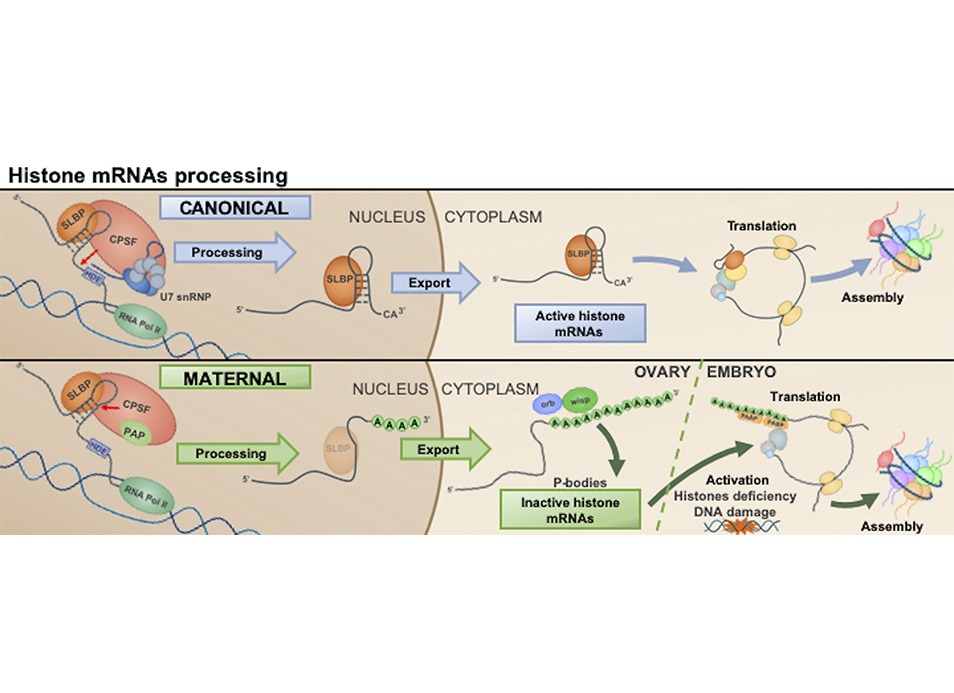Histone transcripts are the only non-polyadenylated cellular mRNAs. They contain a highly conserved 3’UTR stem-loop…
Mad3 modulates the G1 Cdk and acts as a timer in the Start network
Size control is a universal property of cells, and the existence of mechanisms gauging size was anticipated long ago in yeast. Arguing against a simplistic view of cell size control, we show that interlaced protein-degradation machineries impose a timer mechanism that tempers cell size control at Start and, more importantly, tailors G1 length at a single-cell level to diversify cellular dimensions in populations facing unpredictable environments.
Abstract
Cells maintain their size within limits over successive generations to maximize fitness and survival. Sizer, timer and adder behaviors have been proposed as possible alternatives to coordinate growth and cell cycle progression. Regarding budding yeast cells, a sizer mechanism is thought to rule cell cycle entry at Start. However, while many proteins controlling the size of these cells have been identified, the mechanistic framework in which they participate to achieve cell size homeostasis is not understood. We show here that intertwined APC and SCF degradation machineries with specific adaptor proteins drive cyclic accumulation of the G1 Cdk in the nucleus, reaching maximal levels at Start. The mechanism incorporates Mad3, a centromeric-signaling protein that subordinates G1 progression to the previous mitosis as a memory factor. This alternating-degradation device displays the properties of a timer and, together with the sizer device, would constitute a key determinant of cell cycle entry.
Reference:
Pérez AP, Artés MH, Moreno DF, Clotet J, Aldea M (2022) Mad3 modulates the G1 Cdk and acts as a timer in the Start network. Science Advances. 8(18). https://doi.org/10.1126/sciadv.abm4086




